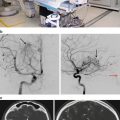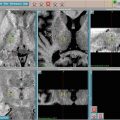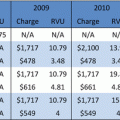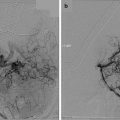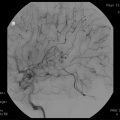Author
Site
Total dose
Dose per fraction
Chemo
LC/*LRC
DFS/PFS
OS
Brizel et al. [1]
OC, OP, HYP, LAR, PNS
70 Gy w/chemo
1.25 Gy BID
Cisplatin, 5-FU weeks 1,6 (2 chemo cycles post-CRT)
*3 years 70 %
5 years 61 %
3 years 55 %
75 GyGy w/o chemo
Jeremic et al. [2]
OC, OP, NP, HYP, LAR
77 Gy
1.1 Gy BID
Daily bolus cisplatin
*5 years 50 %
5 years 46 %
5 years 46 %
Al-Sarraf et al. [3]
OC, OP, HYP, NP, mSinus, LAR
66–73.8 Gy
1.8–2 Gy daily
Cisplatin q3weeks
4 years 43 %
4 years 34 %
Aldelstein et al. [4]
OC, OP, LAR, HYP
66–72 Gy
1.8–2 Gy daily
Cisplatin, 5-FU q3weeks
5 years 77 %
5 years 50 %
Wendt et al. [5]
OC, OP, HYP, LAR
70.2 Gy
1.8 Gy BID (with 2 breaks)
Cisplatin, 5-FU, leucovorin q3weeks
*3 years 36 %
3 years 48 %
LAR
70 Gy
2 Gy daily
Cisplatin q3weeks
5 years 71 %
5 years 38 %
5 years 55 %
10 years 69 %
10 years 22 %
10 years 28 %
Denis et al. (GORTEC) [8]
OP
70 Gy
2 Gy daily
Carboplatin, 5-FU q3weeks
5 years 48 %
5 years 27 %
5 years 22 %
Reirradiation for Locoregional Recurrence
The prognosis for patients with locally recurrent HNSCC is dismal, with 50–60 % of patients dying as a direct consequence of local failure and disease progression [61]. Historically, these patients were managed with systemic therapy alone, with documented overall response rates between 20 and 40 % and median survivals of 5–8 months [62, 63]. Against this backdrop, investigators began examining the potential of delivering second courses of radiotherapy with concurrent chemotherapy (Table 43.2). Reirradiation with concurrent chemotherapy for locoregionally recurrent HNSCC has been evaluated as definitive treatment and for postoperative therapy.
Table 43.2
Definitive reirradiation with concurrent chemotherapy for locoregional recurrence
Author | Total dose | Dose per fraction | Chemo | Tx delivery | Grade 4/5 toxicity | LC | DFS/PFS | OS |
|---|---|---|---|---|---|---|---|---|
Haraf et al. (U. Chicago) [9] | Median 50 Gy | 1.8–2 Gy qdaily or 1.5 Gy BID | HU, 5-FU | CRT given on alternate weeks | 11 % Grade 5 | 5 years 20 % | 5 years 14 % | 5 years 15 % |
Spencer et al. (UAB) [10] | 40–60 Gy | 2 Gy daily or 1.2 Gy BID | HU, 5-FU | CRT given on alternate weeks | none | 2 years 20 % | ||
60 Gy | 1.5 Gy BID | HU, 5-FU | CRT given on alternate weeks | 18 % Grade 4 | 1 year 62 % | 2 years 15 % | ||
8 % Grade 5 | 5 years 4 % | |||||||
RTOG 99–11 [13] | 60 Gy | 1.5 Gy BID | Cisplatin, paclitaxel | CRT given on alternate weeks | 23 % Grade 4 (acute) | 2 years 16 % | 2 years 26 % | |
7 % Grade 5 | ||||||||
DeCrevoisier et al. (Gustave-Roussy) [14] | 60–65 Gy | 2 Gy qdaily or 1.5 Gy BID | RT alone or various chemo | Variable | 25 % Grade 4 | 2 years 11 % | 2 years 21 % | |
3 % Grade 5 | 5 years 9 % | |||||||
Sulman et al. (MDACC) [15] | 60–70 Gy | 2 Gy qdaily | 66 % with cisplatin-based chemo | Variable | 32 % Grade 4 | 2 years 58 % | 2 years 54 % | |
0 % Grade 5 |
Spencer and colleagues from the University of Alabama at Birmingham published the results of their phase I/II trial of reirradiation with concurrent chemotherapy in unresectable locoregionally recurrent HNSCC [64]. They showed the ability to safely deliver 60 Gy (delivered at 1.5 Gy BID) to previously irradiated tissues with concurrent 5-fluorouracil and hydroxyurea. All therapy was delivered on a week-on, week-off schedule. The response rate of 74 % was encouraging and median survival and 2-year overall survival was 10.5 months and 20 %, respectively. Importantly, this was one of the first series to accurately define the risks associated with reirradiation, with 4 of 35 patients developing severe late toxicities (two radiation myelitis, two esophageal strictures) [64]. Their results led to a multi-institutional phase II trial through the RTOG. RTOG 96–10 enrolled 86 patients with unresectable recurrent or second primaries within a previously irradiated field. Patients received concurrent chemoradiation to 60 Gy in 1.5 Gy BID with concurrent 5-FU and hydroxyurea delivered on a week-on, week-off schedule [65]. The final report of RTOG 96–10 showed 2- and 5-year survival of 15.2 % and 3.8 %, respectively. Acute grade 4 and 5 toxicities occurred in 17.7 % and 7.6 %, respectively. Late grade 4 and 5 toxicities occurred in 19.4 % and 3.0 %, respectively [66]. RTOG 99–11, a multi-institutional phase II trial, further evaluated the safety and efficacy of concurrent chemotherapy and reirradiation (see Table 43.2). This study treated patients with recurrent HNSCC after prior radiotherapy with chemoradiotherapy with cisplatin and paclitaxel using accelerated radiotherapy to a total dose of 60 Gy in 1.5 Gy BID (4–6 h between fractions). They documented 2-year progression-free and overall survival rates of 16 % and 26 %, respectively [61].
Reirradiation with concurrent chemotherapy has also been evaluated by multiple investigators in the postoperative setting for in-field recurrence or second primary HNSCC [67–70]. A prospective, randomized trial showed significantly improved locoregional control and disease-free survival for patients treated with postoperative chemotherapy and reirradiation vs. observation [67]. Long-term survival is achievable in this patient population; however, treatment toxicity rates in these studies were not trivial.
Reirradiation of head and neck malignancies requires special consideration for treatment planning and delivery in order to maximize tumor killing and minimize treatment-related morbidity. Tumor location, extent of recurrence, prior radiation details, and time interval between radiation courses are important factors. Because local normal tissues have received prior high dose radiotherapy (often approaching maximum tolerable doses), there is considerable risk for severe morbidity and possible mortality. Furthermore, because these cancers have recurred after a prior full course of radiotherapy, the recurrent tumor cells may be more radioresistant, requiring treatment intensification. Altered fractionation schemes are often employed to lower the risk of severe late toxicity while allowing treatment intensification. A related consideration is the time interval between reirradiation and the initial radiotherapy. With a longer interval, normal tissues have increased capacity for recovery from the initial radiotherapy course. Most studies have required an interval of at least 6 months from the completion of the initial radiotherapy to the start of reirradiation [61, 65, 67, 68]. This time interval is also prognostic for survival [71]. Another important consideration for head and neck reirradiation is target volume delineation. With an increased risk of treatment-related morbidity, there is an emphasis on reducing treatment volumes and minimizing elective target treatment. Generally, planning treatment volumes have included gross disease with a limited expansion or only high-risk areas for postoperative reirradiation [65, 67, 68, 72]. Because of the emphasis on treatment volume reduction, stereotactic treatment can be particularly well suited for head and neck reirradiation. The accurate target delineation, effective patient immobilization, and rapid dose falloff that characterize stereotactic treatment enable tumor treatment with minimal normal tissue coverage. Indeed, stereotactic approaches for head and neck reirradiation have historically treated only areas of gross tumor volume [73, 74]. Recent reports using stereotactic body radiotherapy (SBRT) for reirradiation have used variable expansions from gross tumor, ranging from 0 to 10 mm [75, 76]. Studies are currently underway to define optimal target coverage when utilizing stereotactic reirradiation for HNSCC [77]. Another feature of stereotactic treatment conducive to head and neck reirradiation is the large fraction sizes, which provides a means of treatment intensification to effectively treat recurrent cancer clonogens that are radioresistant after a prior course of standard fraction radiotherapy.
Stereotactic Therapy in Head and Neck Cancers
The use of stereotactic radiotherapy for head and neck cancers originated with the treatment of base of skull and nasopharyngeal cancers [73, 78–81]. In the era preceding combined chemoradiation, the local failure rate for nasopharyngeal squamous cell carcinomas approximated 30 %. With considerable morbidity associated with progression in this area, attempts at local control for nasopharyngeal SCC included reirradiation with external beam radiotherapy, brachytherapy, stereotactic radiosurgery (SRS), and combinations thereof. Recurrent nasopharyngeal squamous cell carcinoma became the first HNSCC managed with SRS. Early studies using either Gamma Knife or Linac-based SRS reirradiation for recurrent disease showed good response and local control rates with acceptable toxicity [73, 74, 81, 82]. These experiences have now been expanded, with many institutions reporting outcomes for salvage stereotactic radiosurgery for recurrent nasopharyngeal cancer. With the increased availability of SBRT, this approach has become widely used for nasopharyngeal recurrences and is being applied more broadly for other sites of inoperable recurrent HNSCC [83–85].
Subsites of the head and neck are attractive for the use of SRS/SBRT for reirradiation for several reasons. The dense concentration and radiosensitivity of tissues and organs and their impact on patient quality of life make precision treatment and minimization of treatment of normal tissue imperative. Additionally, this area has little or no respiratory-related movement, minimizing motion-based uncertainties (although swallowing related motion may require consideration). Additionally, the shortened course of SRS/SBRT is ideal for recurrent head and neck cancer patients who are frequently debilitated with poor performance status, precluding extended treatment courses and systemic therapy.
Ryu et al. published a series from Henry Ford Hospital including 13 patients with recurrent head and neck carcinomas (62 % squamous cell carcinoma) treated with either single-dose or fractionated stereotactic radiotherapy (FSRT) to various head and neck sites [83]. SRS doses ranged from 12–18 Gy (five patients) and FSRT was treated with 30–36 Gy in five or six fractions delivered twice weekly (eight patients). Dose was prescribed to the 90 % isodose line covering the entire gross tumor volume. Objective responses were seen in 70 % of patients (46 % complete response). A follow-up report from the same group included 21 patients treated for recurrent head and neck malignancies using SRS (13–18 Gy) or SBRT (36–48 Gy in 5–8 fractions) [84]. This study showed an overall response rate of 69 % (31 % complete response). All treated patients treated in the oropharynx or larynx experienced RTOG grades 1 and 2 mucositis and esophagitis. Five percent (one patient) and 19 % of patients treated with reirradiation experienced RTOG grade 3 (swallowing difficulty) and grade 4 toxicities (1 dysphagia and ulceration, 2 mucocutaneous fistulas, 1 mucocutaneous fistula and mandibular radionecrosis), respectively. One-year tumor control was 60.6 % with a median survival of 6.7 months [84].
Roh and colleagues published their experience using CyberKnife-based SBRT on 36 patients with recurrent head and neck cancers with prior irradiation [85]. Median doses of 30 Gy (range 18–40 Gy) in 3–5 fractions were delivered to the 65–85 % isodose line on consecutive days. Their planning target volumes (PTV) consisted of gross tumor volume (GTV) with a 2–3 mm expansion. With a median follow-up time of 17.3 months, the overall response rate was 80 % (42.9 % complete response) and local recurrence-free survival was 52.1 % and 30.9 % at 1 and 2 years, respectively. Thirty-six percent (13 patients) experienced RTOG grade 3 acute toxicity (mucositis, nausea, dermatitis), 8 % experienced RTOG grade 4 late toxicity (one bone necrosis, two soft tissue necrosis), and one patient died of treatment-related causes with soft-tissue and skull base necrosis [85].
Unger et al. published a series of 56 patients with unresectable, recurrent HNSCC treated at Georgetown University with SBRT reirradiation [75]. Planning target volumes included gross disease with a 2–10 mm expansion and standard dosing of 30 Gy in five fractions. Notably, many patients in this series received concurrent systemic therapy with cetuximab or carboplatin. They observed an 81 % overall response rate (54 % complete response). Two-year locoregional control and overall survival were 31 % and 40 %, respectively. Median PFS was 5.7 months. Eleven percent (6 patients) experienced grade 4 treatment-related toxicity and one patient suffered a treatment-related death two weeks after completion [75].
A phase I dose escalation trial conducted at the University of Pittsburgh enrolled twenty-five patients who received SBRT reirradiation for unresectable, locally recurrent HNSCC after previous irradiation [86]. Reirradiation was delivered to the 80 % isodose line with at least 90 % gross tumor coverage with a five-fraction course over two weeks. Patients started at the lowest-dose tier of 25 Gy in 5 Gy/fraction and increased until the top-tier dose of 44 Gy was reached. No dose limiting toxicities occurred. Four patients experienced acute grade 1/2 toxicities. No grade 3–5 toxicities were reported [86].
Table 43.3 shows a selection of single-institution reports utilizing SBRT for head and neck reirradiation.
Table 43.3
SRS/SBRT reirradiation for head and neck cancers
Author, institution | Pt. No. | Median dose (range) | Number of fractions | Dose per fraction (Gy) | Fractionation schedule | Grade 3+ toxicity | Grade 5 toxicity | Median PFS (months) | Median OS (months) |
|---|---|---|---|---|---|---|---|---|---|
Cengiz et al. [16] | 46 | 30 Gy (18–35) | 1–5 | 5–18 | qdaily | 30 % | 16 % | 10.5 | 12 |
Kodani et al. [17] | 21 | 30 Gy (19.2–45) | 3–7 | qdaily | 29 % | 10 % | |||
Roh et al. [18] | 36 | 30 Gy (18–40) | 3–5 | 5–13 | qdaily | 44 % | 3 % | 16.2 | |
Unger et al. [19]a | 65 | 30 Gy (21–35) | 2–5 | 4–12 | qdaily | 11 %c | 1.5 % | 5.7 | 12 |
Siddiqui et al. [20]b | 44 | 1–8 | 6–18 | QOD | 16 % | 0 | 6.7e | ||
Vargo et al. [21]d | 34 | 40 Gy (17–50) | 1–5 | 6–20 | QOD | 21 % (G3 only) | 0 | 11 | |
Comet et al. [22] | 40 | 36 Gy | 6 | 6 | QOD | 10 % (G3 only) | 0 | 8.8 | 13.6 |

